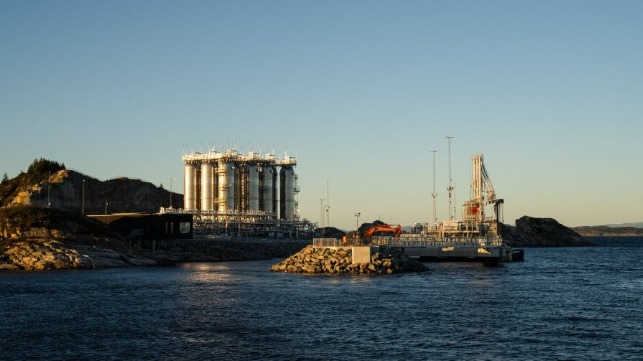Northern Lights Injects First CO2 in Subsea Storage Well

The pioneering Northern Lights project has injected its first shipment of carbon dioxide for long-term storage in a subsea reservoir off the coast of Norway, launching a long-anticipated service backed by Equinor (as operator), TotalEnergies, Shell and the Norwegian government.
“With CO2 safely stored below the seabed, we mark a major milestone. This demonstrates the viability of carbon capture, transport and storage as a scalable industry. With the support from the Norwegian government and in close collaboration with our partners, we have successfully transformed this project from concept to reality,” said the CEO of Equinor, Anders Opedal, in a statement Monday.
Northern Lights is the first commercial-scale project of its kind, and it is the backbone of a constellation of Norwegian carbon-capture initiatives. The offshore reservoir serves as the final destination for carbon from a variety of onshore industries, notably the Heidelberg cement plant in the town of Brevik and the Hafslund waste incineration plant in Oslo. Other future users include Yara, Stockholm Exergi and Orsted, among others, through the provision of long-distance CO2 shipping. An initial small-scale liquefied CO2 shipping service is provided by K Line.
Now that Northern Lights is up and running, its backers want to expand it rapidly. The current capacity is just 1.5 million tonnes per year, about the same as the annual emissions of 320,000 non-electric cars. With backing from the EU, its owners plan to add more infrastructure to more than triple that number to 5.0 million tonnes per year. This second development phase should be completed and ready for operation in late 2028. The scope includes an additional jetty, nine new storage tanks, and more injection wells.
Over the long term, Equinor wants to have 30-50 million tonnes a year of CO2 transport and storage capacity by 2035, primarily in Europe and in the U.S.
